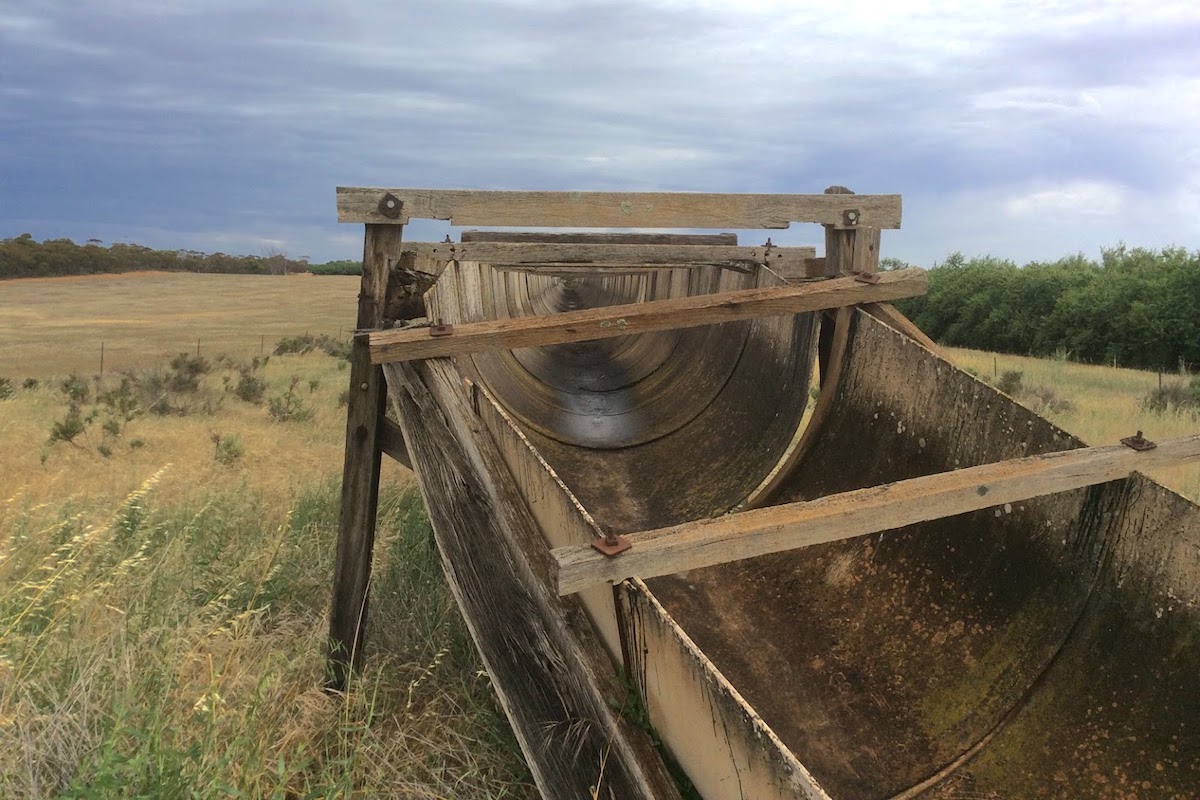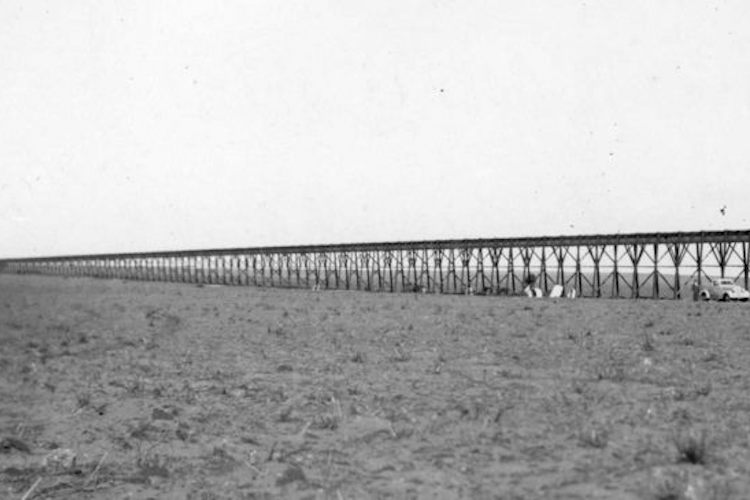
Hero Image Source: Niftydel Australia
If you’re a bit of a history buff or just want to know more about the area around Swan Hill, why not consider taking a drive out to Flume Road near the corner of Lucas Lane, Piangil (Wood Wood or Miralie but Piangil area).
To get there, head north out of Swan Hill towards Piangil along the Murray Valley Highway. After you go past Nyah, turn left off the highway onto Wood Wood Back Road. You’ll be driving on some dirt roads past many kilometres of almond orchards until you get to Flume Road. You’ll be rewarded with a rare sighting of the Burra flume.
What is a flume?
A flume, from the Latin word flumen, meaning river, is a man-made channel for transporting water. It can be at ground level but technically a flume is an above-ground channel. The flume channel itself can be made from wood, metal or concrete. If the flume is raised high above the ground, the trestle is usually made from timber. These raised channels can sit above the contours of the land and were extensively in the United States to carry logs from logging sites to destinations closer to a mill or a river. However, in Australia, flumes generally were used to carry water only.
History of the Burra Flume
The Piangil-Tyntynder Burra flume, built on timber trestles with a cement sheeting channel, was constructed around 1914 to 1917. Its primary purpose was to provide irrigation water for the many farms that were being established in the region.

Photo from State Library Victoria collection
Much of the country surrounding Swan Hill is pretty dry for most of the year. In fact, the Swan Hill region receives an average annual rainfall of only around 300 to 450 mm. In 1907 and 1908, Nyah received an annual rainfall of only around 200mm.
To help make the land more productive, irrigation channels were constructed so that water could be used from the Murray river to water the many farms for crops and animals. But, because the country around Miralie and Piangil undulates, the construction of the usual straight channels was impossible.
The solution was to borrow from overseas and create raised channels instead. The flumes were built in stages from Yarraby to Burra. Additionally, major channels were built from Nyah West to Manangatang and Annuello.
Construction coincided with a major subdivision of allotments of around 200 to 280 hectares that were largely taken up by soldier settlers in the area.
The flumes were decommissioned around 1980 as major pipeline construction replaced them. The flume that you’ll see on Flume Road is of historical significance and is one of the rare remnants of this type of construction.
Almond growing in the area
We can’t talk about getting to the flume without mentioning almonds. And if you haven’t taken a drive out that way for a while, you’re going to get a shock when you see the extent of the almond orchards. As you near the flume, you’ll pass so many almond orchards, it seems as if they go on forever. Almond growing is now a major industry along the Murray river from Swan Hill to Mildura. In fact, Australia is the 8th largest almond producer in the world; in 2020-21, Australia produced 114,427 tonnes, up 10% on the previous year.
Increased demand for almond products around the world, including for almond milk and almond butter as dairy alternatives, has made this crop lucrative for farmers, many of whom ripped out citrus in the 1990s to take advantage of the almond-friendly climate of the Swan Hill region.
Almonds were first grown in Australia around 1830 on Kangaroo Island. Today Victoria produces around 68% of the almonds grown around Australia. Other major almond growing areas include the Adelaide Plains and other areas in South Australia and lower New South Wales. Western Australia is a recent entrant and becoming more popular due to their system of water allocation.
Amazingly, since 2000, almond orchards have increased in land area from 3,546 hectares to a massive 53,000 hectares in 2019. As at 2021, an additional l 1,672 hectares were planted to take the total orchard area to 58,523 hectares. And, the growth shows now signs of stopping. Australian almonds find ready markets as they’re relatively pest free and reliable. In fact, our almond orchards are amongst the most productive in the entire world.
Can we help with your Swan Hill home?
We’re full of local area knowledge and places that you can visit around Swan Hill so why not give us a call on 03 5032 2507. We’re here to help.

